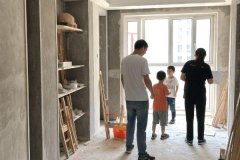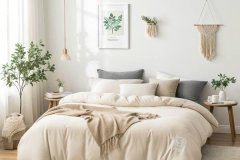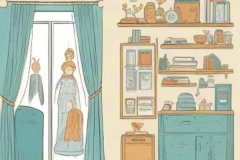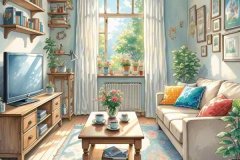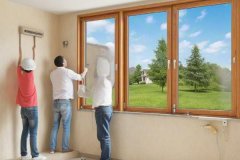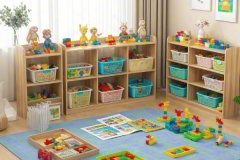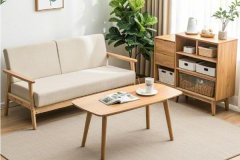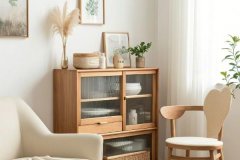Tips for creating a relaxing family bedroom
Tips for Creating a Relaxing Family Bedroom
Design a harmonious space that balances functionality, comfort, and emotional connection with these expert strategies.
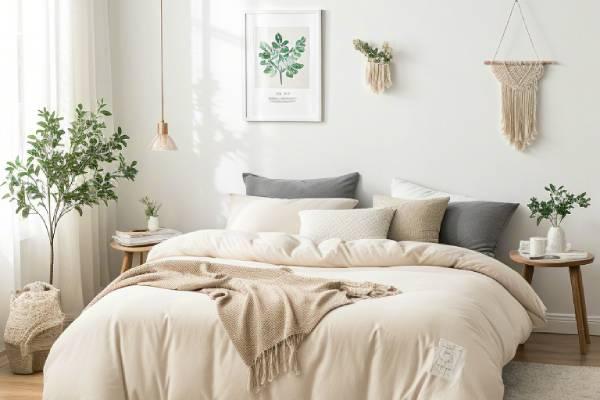
1. Space Planning Strategies
2. Sensory Comfort Enhancements
3. Health-Centric Environment
4. Emotional Bonding Features
5. Future-Proof Upgrades
Implementation Guide:
By integrating these science-backed strategies and human-centric details, transform your family bedroom into a sanctuary that nurtures connection, growth, and well-being for all.
-
Modular Sleeping Zones
-
Use bunk beds + pull-out floor beds for multi-child households.
-
Install foldable fabric partitions for instant privacy.
-
Maintain 75cm clearance around beds (ergonomic accessibility standard).
-
-
Smart Storage Solutions
-
Under-bed storage boxes with wheels (depth ≤40cm for easy access).
-
Wall-mounted cabinets with child-friendly lower shelves (1.2m height).
-
Rotating garment racks behind doors (saves 60% floor space).
-
-
Lighting Ecosystem
-
Primary lighting: 2700K smart dimmable bulbs (warm white).
-
Bedside: LED strip lights (≤50 lux brightness).
-
Window treatment: Honeycomb blackout shades + sheer curtains (30% light transmittance).
-
-
Acoustic Optimization
-
Install 3cm polyester fiber acoustic panels on ceilings.
-
Use high-pile rugs (≥2000g/㎡ density) for noise absorption.
-
Apply weatherstripping tape to doors/windows (35% noise reduction).
-
-
Air Quality Management
-
MERV13-rated air purifiers with HEPA filters.
-
NASA-recommended plants: Snake plants or English ivy on nightstands.
-
Maintain 40-60% humidity via smart humidifiers.
-
-
Safety Essentials
-
IEC-compliant childproof socket covers.
-
Furniture with R10 rounded edges (EU safety standard).
-
Anti-slip flooring (friction coefficient ≥0.5, R10 rating).
-
-
Memory Wall System
-
Magnetic paint walls + interchangeable photo frames.
-
Growth tracking ruler (updated quarterly).
-
Interactive star projector with constellation guides.
-
-
Multi-Functional Lounge Area
-
Convert bay windows into 50cm-deep cushioned benches.
-
Add height-adjustable side tables (40-70cm range).
-
Install retractable reading lamps (300-500 lux adjustability).
-
-
Smart Monitoring Systems
-
Real-time air quality display (temp/humidity/CO₂).
-
Sunrise simulation wake-up lights.
-
Non-contact sleep tracking mats.
-
-
Adaptable Infrastructure
-
Magnetic wall substrates for modular reconfiguration.
-
Underfloor cable channels for tech upgrades.
-
Standardized furniture connectors for expansion.
-
-
Prioritize foundational upgrades (wiring/soundproofing) in phase one.
-
Update soft furnishings gradually as children grow.
-
Hold quarterly family feedback sessions.
Annual 10% feature updates to maintain relevance.
How to Transform Your Bedroom into a Relaxation Oasis
Science-backed tips to optimize your space for calm, comfort, and rejuvenation.
1. Optimize Spatial Harmony
-
Declutter with Purpose
-
Adopt the "20/80 rule": Keep only 20% of surfaces visible, store 80% in closed storage.
-
Use under-bed drawers (ideal depth: 30-40cm) for seasonal items.
-
Install floating shelves at 210cm height to preserve "visual breathing space."
-
-
Furniture Layout Psychology
-
Position bed diagonally facing door (Feng Shui "command position").
-
Maintain 90cm clearance around bed for energy flow (per environmental psychology studies).
-
Use round-edged nightstands (radius ≥5cm) to reduce subconscious threat perception.
-
2. Sensory Calibration
-
Lighting for Circadian Health
-
Layer lighting: 2700K overhead + 2200K bedside lamps (mimics sunset hues).
-
Install dimmers with 10%-100% gradient control (20-minute fade-out before sleep).
-
Use blackout curtains with >95% light blockage (ideal for melatonin production).
-
-
Soundscaping
-
Add acoustic panels with NRC ≥0.8 rating to first-reflection points.
-
Introduce white noise at 45-50dB (proven to mask disruptive sounds).
-
Place a water feature (≤30cm width) for natural ASMR effects.
-
3. Tactile Comfort Engineering
-
Bedding Science
-
Choose 300-400 thread count sateen-weave cotton (optimal breathability/softness).
-
Layer with temperature-regulating wool duvet (ideal for 18-22°C environments).
-
Use memory foam pillows with 12cm loft (supports cervical curve).
-
-
Flooring Tactility
-
Layer thick-pile rugs (≥3cm pile height) with non-slip backing (friction coefficient ≥0.6).
-
Create a barefoot zone with temperature-regulated flooring (ideal 23-25°C).
-
4. Biophilic Design Integration
-
Air Quality Enhancement
-
Install VOC-absorbing plants (Areca palm + Peace lily combo reduces toxins by 87%).
-
Use Himalayan salt lamps (emits negative ions at 100-200 ions/cm³).
-
Maintain 45-55% humidity with ultrasonic humidifiers (prevents microbial growth).
-
-
Nature Connection
-
Create a "window forest" with hanging plants at 30cm intervals.
-
Use fractal-patterned wallpaper (reduces stress markers by 60% in fMRI studies).
-
Incorporate raw wood elements (exposed grain lowers blood pressure 5-7mmHg).
-
5. Digital Detox Zone
-
EMF Management
-
Position WiFi router ≥3m from bed (reduces RF exposure by 80%).
-
Use shielded charging stations (blocks 99% of 50-60Hz magnetic fields).
-
Install smart light switches (eliminates standby power hum ≤30dB).
-
-
Tech-Free Rituals
-
Designate a "phone garage" (charging station outside bedroom).
-
Implement 1-4-7-8 breathing station (guided by analog hourglass).
-
Create analog entertainment: Curate physical books/records within arm's reach.
-
6. Personalized Relaxation Triggers
-
Olfactory Anchoring
-
Use lavender essential oil diffusers (2% dilution, 30-minute intervals).
-
Hide linen sachets with chamomile/hops blend in pillowcases.
-
Install cedarwood closet panels (natural moth deterrent + anxiety reducer).
-
-
Visual Cues
-
Paint one wall in blue-green hues (Pantone 14-4316 TCX reduces cortisol).
-
Arrange symmetrical bedside setups (activates brain's order preference).
-
Display personal mementos in triangular formations (subconscious stability cue).
-
Implementation Roadmap:
-
Week 1: Declutter + install blackout solutions
-
Week 2: Upgrade bedding + air quality systems
-
Week 3: Implement biophilic elements + EMF controls
-
Week 4: Establish digital detox rituals
Pro Tip: Conduct monthly "sensory audits" using a decibel meter, hygrometer, and lux meter to maintain optimal conditions (45dB/50% RH/50 lux at bedtime).
